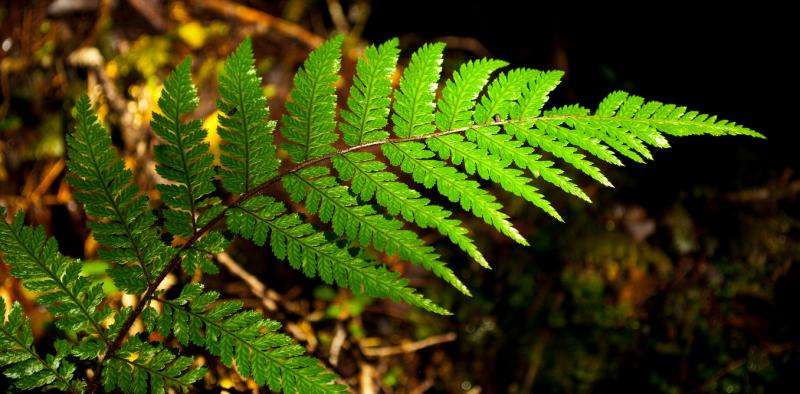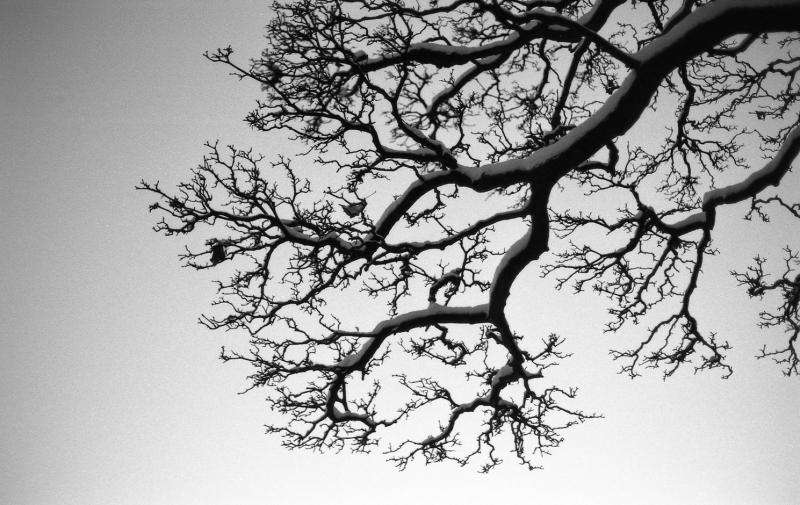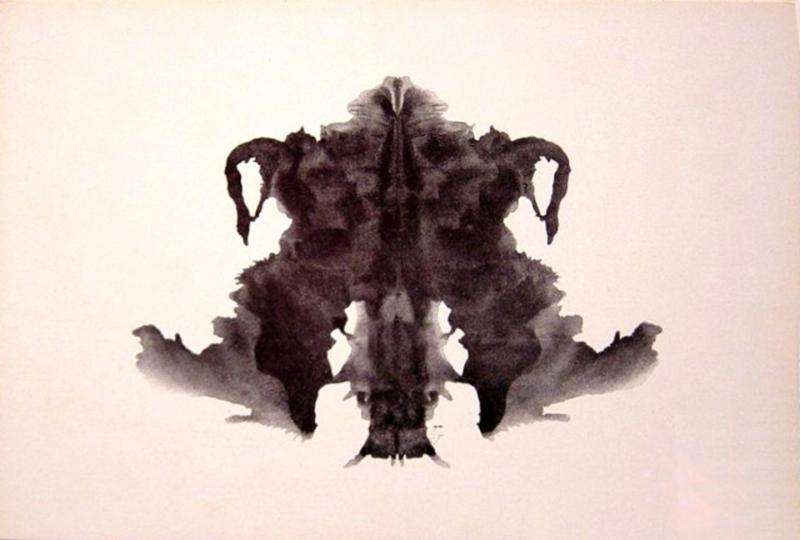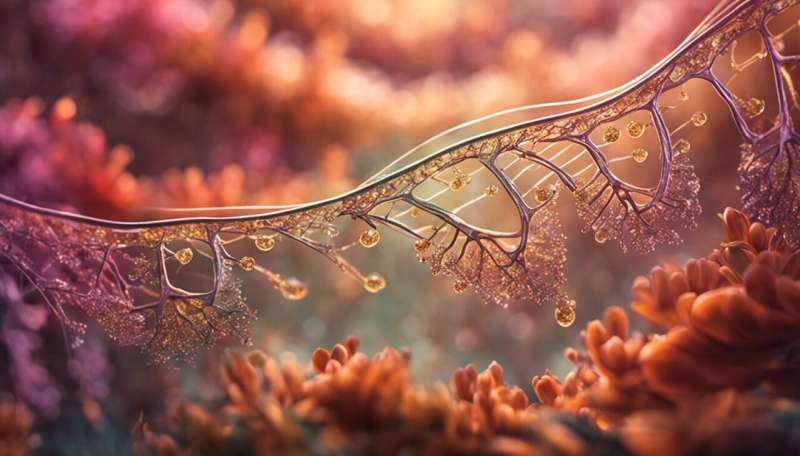Fractal patterns in nature and art are aesthetically pleasing and stress-reducing

Humans are visual creatures. Objects we call "beautiful" or "aesthetic" are a crucial part of our humanity. Even the oldest known examples of rather than utilitarian roles. Although aesthetics is often regarded as an ill-defined vague quality, are using sophisticated techniques to quantify it – and its impact on the observer.
We're finding that aesthetic images can induce staggering changes to the body, including . Job stress alone is estimated to cost American businesses , so studying aesthetics holds a huge potential benefit to society.
Researchers are untangling just what makes particular works of art or natural scenes visually appealing and stress-relieving – and one crucial factor is the presence of the repetitive patterns called fractals.
Pleasing patterns, in art and in nature
When it comes to aesthetics, who better to study than famous artists? They are, after all, the visual experts. My research group took this approach with , who rose to the peak of modern art in the late 1940s by pouring paint directly from a can onto horizontal canvases laid across his studio floor. Although battles raged among Pollock scholars regarding the meaning of his splattered patterns, many agreed they had an organic, natural feel to them.
My scientific curiosity was stirred when I learned that , featuring patterns that repeat at increasingly fine magnifications. For example, think of a tree. First you see the big branches growing out of the trunk. Then you see smaller versions growing out of each big branch. As you keep zooming in, finer and finer branches appear, all the way down to the smallest twigs. Other examples of nature's fractals include clouds, rivers, coastlines and mountains.

In 1999, my group used computer pattern analysis techniques to show that as patterns found in natural scenery. Since then, more than 10 have performed on his paintings. Pollock's ability to express nature's fractal aesthetics helps explain the enduring popularity of his work.
The impact of nature's aesthetics is surprisingly powerful. In the 1980s, architects found that patients recovered more quickly from surgery when given . Other studies since then have demonstrated that just looking at pictures of natural scenes can change the way a person's autonomic nervous system .
For me, this raises the same question I'd asked of Pollock: Are fractals responsible? Collaborating with psychologists and neuroscientists, found in nature (using photos of natural scenes), art (Pollock's paintings) and mathematics (computer generated images) and discovered a universal effect we labeled "."
Through exposure to nature's fractal scenery, people's visual systems have adapted to efficiently process fractals with ease. We found that this adaptation occurs at many stages of the visual system, from the way our eyes move to which regions of the brain get activated. This fluency puts us in a comfort zone and so we enjoy looking at fractals. Crucially, to record the brain's electrical activity and to show that this aesthetic experience is accompanied by stress reduction of 60 percent – a surprisingly large effect for a nonmedicinal treatment. This physiological change even accelerates .

Artists intuit the appeal of fractals
It's therefore not surprising to learn that, as visual experts, artists have been embedding fractal patterns in their works through the centuries and across many cultures. Fractals can be found, for example, in Roman, Egyptian, Aztec, Incan and Mayan works. My favorite examples of fractal art from more recent times include (1500), (1830), M.C. Escher's Circle Series (1950s) and, of course, .
Although prevalent in art, the fractal repetition of patterns represents an artistic challenge. For instance, many people have attempted to fake Pollock's fractals and failed. Indeed, our fractal analysis has in high-profile cases. Recent studies by others show that fractal analysis can with a 93 percent success rate.
How artists create their fractals fuels the nature-versus-nurture debate in art: To what extent is aesthetics determined by automatic unconscious mechanisms inherent in the artist's biology, as opposed to their intellectual and cultural concerns? In Pollock's case, his fractal aesthetics resulted from an intriguing mixture of both. His fractal patterns originated from his body motions (specifically an known to be fractal). But he spent 10 years consciously refining his pouring technique to increase the visual complexity of these fractal patterns.

Fractal complexity
Pollock's motivation for continually increasing the complexity of his fractal patterns became apparent recently when I studied the . These abstract blots are famous because people see imaginary forms (figures and animals) in them. I explained this process in terms of the fractal fluency effect, which enhances people's pattern recognition processes. The low complexity fractal inkblots made this process trigger-happy, fooling observers into seeing images that aren't there.
Pollock disliked the idea that viewers of his paintings were distracted by such imaginary figures, which he called "extra cargo." He intuitively increased the complexity of his works to prevent this phenomenon.
Pollock's abstract expressionist colleague, , also painted fractals. When he was diagnosed with dementia, some art scholars called for his retirement amid concerns that that it would reduce the nurture component of his work. Yet, although they predicted a deterioration in his paintings, his missing from his earlier pieces. Recently, the fractal complexity of his paintings was shown to . The study focused on seven artists with different neurological conditions and highlighted the potential of using art works as a new tool for studying these diseases. To me, the most inspiring message is that, when fighting these diseases, artists can still create beautiful artworks.
My main research focuses on to victims of retinal diseases. At first glance, this goal seems a long way from Pollock's art. Yet, it was his work that gave me the first clue to fractal fluency and the role nature's fractals can play in keeping people's stress levels in check. To when looking at nature's fractals as normal eyes do, they closely mimic the retina's design.
When I started my Pollock research, I never imagined it would inform artificial eye designs. This, though, is the power of interdisciplinary endeavors – thinking "out of the box" leads to unexpected but potentially revolutionary ideas.
Provided by The Conversation
This article was originally published on . Read the .![]()


















